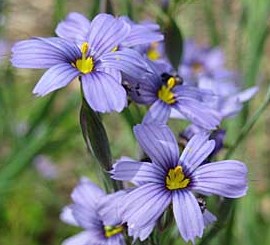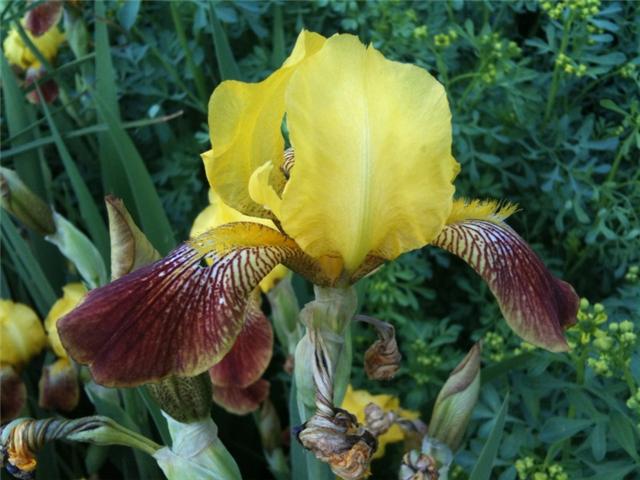The Iris Family (Iridaceae) takes its name from the Greek goddess of the rainbow, Iris. It is comprised mostly of herbaceous plants, some of which are commercially important for their flowers. German iris and others irises are popular garden plants as are gladiola, crocosmia, and crocus. Crocus sativus is important for the production of saffron that comes from the stigmas of the flowers. The plants resemble members of the Lily Family but can be distinguished from them by the leaves and the number of stamens. Most members of the family are herbaceous and many are deciduous so can survive cold periods. There are over 1,500 species in about 60 genera, five of which are native to North America.
The most important characteristics for identification of the Iris Family are:
 Sword like leaves with parallel veins growing in a flat plane. This growth pattern results in a fan like appearance.
Sword like leaves with parallel veins growing in a flat plane. This growth pattern results in a fan like appearance.
 Three sepals and three petals. They may be the same in size and color like crocus and blue eyed grass flowers, or different, like many iris flowers.
Three sepals and three petals. They may be the same in size and color like crocus and blue eyed grass flowers, or different, like many iris flowers.


 Three stamens
Three stamens
Additional characteristics that may be useful in identification:
 Inferior ovary
Inferior ovary
 Root stock a rhizome, corm or bulb
Root stock a rhizome, corm or bulb
The Iris and Lily families resemble each other but can be distinguished from each other by their leaves and stamens. The Iris Family’s leaves grow in a flat plane and the flowers have three stamens, while the Lily Family’s leaves grow in multiple planes and the flowers have 6 stamens.
